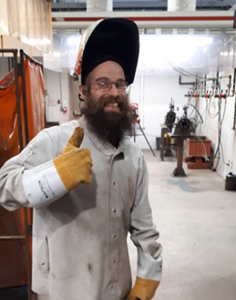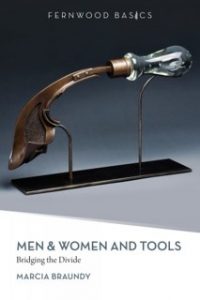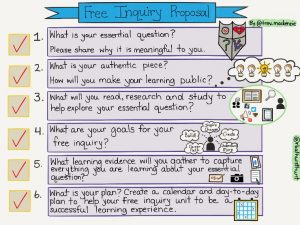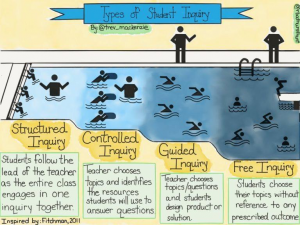Monthly Archives: July 2019
Indigenous Education
Idle No More by S. Pete (2017). (*Chapter 3)
Meschachakanis, A Coyote Narrative: Decolonising Higher Education by S. Pete (2018) (*Chapter 10)
When reading Idle No More and Meschachakanis, A Coyote Narrative: Decolonizing Higher Education by Shauneen Pete, I was teleported back to my teacher education program. Pete, an indigenous resource coordinator and professor, tells of her experiences of exhaustion and conflict with students. This conflict arose when teaching them the importance of indigenous education. She asserts indigenous education is not “extra” to teaching, education, or the curriculum but is those things. I remember all too well students within my own education program asking when they were going to “learn how to teach.” I can sympathize with both positions. The students, including myself, knew the system of education they were taught and had expectations that their teacher program would show them how to teach in a similar manner. Furthermore, many other courses in the program set a “classic” or settler focused approach to education. Only a few teachers in my program, much like Pete, challenged those expectations and it made some upset, particularly when many of us were accused of being racist.
It took a lot of time for people to come around to the teachers’ way of thinking. I recognize now what Pete and my teacher were doing. They needed to challenge our preconceived notions of education and do it in a startling way. It worked for some, but it shut a lot of students down as well and caused them to not participate in class other than the bare minimum to pass the course.
I really enjoyed reading Pete’s point of view on this situation. Having been on the student side it was hard at times to see what the teacher must have been going through. Pete’s words are very eye opening. I am intrigued by Pete’s repeated regrouping and reattempts to integrate indigenous education into her curriculum. Despite numerous setbacks she was able to try a different angle until she found what worked for her.
Now and educator myself, I see the challenges of Pete’s work and people like her far more clearly then I did when I was in my teacher program. I have tried very hard to teach with an indigenous educational focus in my classroom. Admittedly, I fail more often than I succeed but I feel I am getting better. I include many indigenous projects, such as bentwood boxes, drums, carving, and paddles. When we make these projects, we work through indigenous design and connect with our local community and band, the T’Souke Nation. This is all a start and I still have a long way to go to properly indigenizing my educational methods.
Both articles did challenge me in many ways to improve my classroom. First, I hope to include more information focused on First Nation and Metis artists/carvers/builders. Further, I would like to include projects related to current indigenous issues and concerns. Instead of giving trinket gifts to elders/role models when they share with my classes, I need have the class and myself do something for them in return for so graciously giving up their time and sharing their knowledge. Lastly, I need to do my own research in how to better indigenize my courses instead of relying on others to do my work for me. I plan to check out the works of Dr. Rauna Kuokkanen & Dr. Marie Battiste, among others, as suggested by Pete.
As research, I find both of Pete’s papers to be very clear and well written. She has taken an auto-ethnographic approach and inserted elements of story telling which not only enhance her points but also make them more enjoyable and colourful to read. Her use of “Coyote” as a blunt truth-speaker to her thoughts really emphasizes her points in a fun and engaging way. Her research is important in that it conveys indigenous points of view and the requirements of healthy indigenous education to be implemented into the modern classroom.
Both papers are neither quantitative or qualitative but more based on Pete’s lived experience. When in class, Pete shared her story and explained her love for story telling. I found the part of her story where she described her dissertation very interesting. Her work was presented in the way of a story rather than traditional academic methods and some judging members of her work were unsure of how to perceive that or whether her work was admissible. The use of story made a great point about traditional academia/education not considering outside or other methods, sent home her point of having to fight constantly for indigenous point of view in education, and did it in an engaging and sympathizing way.
Meeting the Researcher
‘Public comment sentiment on educational videos: Understanding the effects of presenter gender, video format, threading, and moderation on YouTube TED talk comments by G. Veletsianos, R. Kimmons, R. Larsen, T. A. Dousay & P. R. Lowenthal (2018)
Women Scholars’ Experiences with Online Harassment and Abuse: Self-Protection, Resistance, Acceptance, and Self-Blame by G. Veletsianos, S. Houlden, J. Hodson, & C. Gosse
In Public comment sentiment on educational videos: Understanding the effects of presenter gender, video format, threading, and moderation on YouTube TED talk comments, G. Veletsianos, R. Kimmons, R. Larsen, T. A. Dousay & P. R. Lowenthal conduct a study on YouTube comment sections of TED talk videos using mostly quantitative research methods. They explore the positive/neutral/negative connection of the comments section based on the video being presented by a male, female, or animation. The study found that most comments were neutral. Furthermore, male presenter’s comment sections were generally more neutral when compared to female presenters whose comment sections were more polarized. It is also suggested that less polarize comment sections could be achieved with the use of animated videos, although this method does put the onus of controlling comments on the presenter and not the commenter. Interestingly, results assert that negativity in comments begot negativity and the same with positivity. It is suggested that limiting negative comments may produce a healthier comment section.
Another study, Women Scholars’ Experiences with Online Harassment and Abuse: Self-Protection, Resistance, Acceptance, and Self-Blame by G. Veletsianos, S. Houlden, J. Hodson, & C. Gosse, uses a qualitative research method, interviewing 14 female scholars about their experiences with online harassment to better understand the coping methods taken by the scholars. Results found that self protection, resistance, self blame, and/or acceptance of harassment were all used by participants as coping methods.
Both articles assert that harassment of female scholars is more prevalent than it is for their male counterparts. Implications from the research shows that institutions must take time to warn scholars of the potential hazards of online interaction as they encourage those scholars to have an online presence. They can do this by providing training for the professional use of social media and demonstrate how they will support faculty being harassed online, both preventatively and otherwise.
It should be noted that neither study explored other potential causes for negative online feedback beyond gender, neglecting factors such as class, ability, religion, or race. It is entirely possible that one or multiple other factors could have triggered negative responses. Accounting for this would have greatly improved both studies but also radically expanded their scope and likely would have not been within the studies time frame or budget. Furthermore, it should be noted that the Women Scholars’ Experience With Online Harassment and Abuse studies participants were all from English speaking countries and were generally affluent.
Both studies appear thoughtful in their approaches despite taking differing methods to reach their conclusions. I find myself attracted to qualitative research over quantitative as I feel it is more inclusive/equitable and less about turning opinions into numbers. Qualitative methods appear require more work which can be seen by the 14 interviewees chosen as compared to the Public comment sentiment on educational videos study which uses thousands of anonymous YouTube commenters as their data.
Both articles audiences are post secondary graduate students, academics, and other university/college faculty. The general message being to both that if they are going to push faculty and online students into a potentially hazardous online space they will need to prepare them for the realities that await them, especially the women. It is asserted that institutions need to also have female inclusion when addressing online harassment issues in order to make sure that their concerns and needs are met.
In class, we had the pleasure of meeting with a member of both studies, George Veletsianos. I found meeting the researcher in person to be very interesting. It is very easy to see researches as faceless people and not recognize the human and humanity behind the research. One thing that I found very interesting was when George mentioned why they only used 14 interviewees. I thought the number was exceptionally low but after his explanation that after 14 interviews they were just repeating themselves and not gaining any new knowledge it made a to more sense to me. George came across as very caring and passionate about his work and I really appreciate his willingness to admit where his weaknesses were and how he would recruit others to help him with his research to make up for those short comings. Overall the experience was very informative and well worth the time.
Applying Mixed Methodology and Its Effects on Research
History, Biography, Academic Profile:
Alicia O’Cathain (BSc, MSc, MA, PHD) is a professor of health services research at the University of Sheffield where she works to develop and evaluate complex treatments for chronic conditions and lead projects in emergency and urgent care. O’Cathain’s University of Sheffield’s web page describes here vast catalogue of research journals on methodology in comprehensive detail. Most of her work has focused on mixed methodological research but has more recently delved into qualitative methods using randomized controlled trials. This knowledge she shares in workshops and clinics for PhD candidates (“University of Sheffield,” 2018).
The Framework of Mixed Methodology:
In Assessing the Quality of Mixed Methods Research: Toward a Comprehensive Framework, Alicia O’Cathain outlines the basic framework for using a mixed methodology research method. O’Cathain demonstrates a comprehensive method of mixing qualitative research methods with quantitative research methods. This mixed method, although more exhaustive, can potentially lead to stronger results and conclusions.
O’Cathain (2010) breaks down the basic framework for mixed methodology into eight parts:
Planning quality outlines the means and approach to the research which is followed by design quality which defends the chosen methodology. This is in turn followed by data quality which upholds the data collection methods and size to be used. Next interpretive rigor ensures that conclusions are accurate, consistent, and credible which in turn leads to inference transferability which explores if the research can be applied to other contexts. Reporting quality outlines if the research met it goals and stayed within its means. This is in turn followed by synthesizability which demonstrates that the research is all the same quality. Lastly, the utility of the research is explored. Utility covers who is using the work and for what purpose.
These eight guiding parts are broken down further to ensure that proper guidelines are met and results will be accurate and usable.
Applying Mixed Methodology:
Moving Beyond Cultural Barriers: Successful Strategies of Female Technology Education Teachers by Ray McCarthy and Joseph Berger sets out to assess why female technology education teachers pursued the career path they did and explore why there is such low female representation within the STEM (Science, Technology, Engineering, and Math) field of work. The researchers used a qualitative research method by interviewing ten female participants of varying ages, all technology education (tech ed) teachers, and comparing their overall responses. The participants were asked questions over two interview sessions focusing on their lives and upbringing and how they decided to pursue the technology education / STEM career path. They were also tasked with creating a journal over 14 days which documented influences and transition points that may have led them to their career. (McCarthy & Berger, 2008).
The Research
As the Moving Beyond Cultural Barriers article uses a qualitative research method, a quantitative research approach is required to meet the mixed methodology definition as outlined by O’Cathain. An ideal way to meet that goal would be to expand McCarthy and Berger’s research to include a control population of women who did not go into the STEM field or a career as a technology education teacher. The research would be further strengthened by increasing the number of the interviewed to a group larger than ten. It should be noted that this would likely add more cost and time to the project.
Now with a control group, the researchers could sample school transcripts of the women who went into STEM/tech ed with an equal sized random sample of women who did not go into STEM/tech ed. The researchers could then compare two things: course selection and grades in math and sciences. This information would be used to see if:
- there are any correlations between elective choice and future career paths.
- there are any correlations between success in math and science and future career paths.
This research would (potentially) give the results a stronger and more accurate depiction of women who both did and did not pursue STEM or tech ed jobs. It would be more thorough and have less margin of error.
The Researcher
The two researchers, McCarthy and Berger, would already have their hands full with all the information they gathered from their initial ten interviews. Adding a second research method will right away add to the researcher’s financial needs, time requirements, and overall work load. The researchers would need to create and a apply new framework for the newly added quantitative research. That would be followed by proceeding with collecting, calculating, and reporting the findings found in the provided transcripts. First, they would have to expand their recruitment efforts to find the women to participate as their control group. Second, they would be required to acquire multiple transcripts from said control group as well as their original interview group which could prove difficult.
When all the new interviews were completed the researchers would have to reorganize and make new conclusions on their amended interview data and make new conclusions based on an updated assessment.
The Researched
It would be important that all the women interviewed for this research felt comfortable with the experience and that they would be willing to share their transcripts with the researchers. Failure to meet either of these points would mean that they would need to be replaced with someone who is willing and able to meet these requirements.
All women interviewed would need to be interviewed away from the other interviewees. Furthermore, they must all be asked the same set of well-crafted questions with no leading input from the researchers.
Transcripts provided would need to be clear and not tampered with in any fashion. Documents would also be either returned to the rightful owner or destroyed after the research process.
The Reader
With the updated research the reader would have a stronger and more compelling argument defending what methods could be taken to encourage women to pursue careers in STEM and technology education. Additionally, it would help the reader understand the issues and societal pressures women face in their upbringing and when choosing a career.
These findings could encourage future researchers to conduct studies into what changes can be made to encourage women to pursue the STEM/tech ed fields. It could also be beginning to wider research looking into the effects of class, race, and ability and their impact on women pursuing STEM/tech ed career paths.
Questions and Insights:
The research discussed in the article hopes to challenge stereotypes but in doing so could potentially reinforce them based on outcomes. Furthermore, in the researchers hope to discover why some women go into STEM and tech ed careers their findings could be interpreted in a way that they had not intended. For example, it is possible for a reader to write the original interviewees off as female anomalies and conclude that their experiences are “other.”
I do question the choices of the two researchers, McCarthy and Berger, to not find a female researcher to join them in the process. It is likely that a female researcher could have given female insight and voice to the paper that the two original researches do not have as they do not have the lived experience of a woman.
McCarthy and Berger’s research is well done for a small scale sample but the results would have more strength if the overall sample size of interviewees was larger. It is possible that their work could lead to a more expanded body of research in the future, paving the way for future growth in an area of focus that has seen little change over the last half century.
References:
McCarthy, R. R., & Berger, J. (2008). Moving Beyond Cultural Barriers: Successful Strategies of Female Technology Education Teachers. Journal of Technology Education, 19(1), 65-79.
Ocathain, A. (2010). Assessing the Quality of Mixed Methods Research: Toward a Comprehensive Framework. SAGE Handbook of Mixed Methods in Social & Behavioral Research, 531-556.
University of Sheffield. (2018, November 01). Health Services Research. Retrieved July 07, 2019, from https://www.sheffield.ac.uk/scharr/sections/hsr/mcru/staff/ocathain_a
Autoethnography & Research Diaries
Autoethnography: An Overview by C. Ellis, T. E. Adams & A. P. Bochner (2011)
http://www.qualitative-research.net/index.php/fqs/article/view/1589/3096
In Autoethnography: An Overview, C. Ellis, T. E. Adams & A. P. Bochner assert that Autoethnography is the use of self reflection within research to demonstrate the authors experiences as they relate to the research topic. Autoethnography could impact the research in presenting a differing opinion beyond the perceived default white religious male’s point of view. It allows a topic to be addressed using differing experiences of race, gender, sexuality, age, ability, class, education, and/or religion.
This type of research is important as it considers differing experiences beyond the “norm.” Also, it recognizes the differing experiences which affect research and can alter that researches outcomes. For example, when I worked as a full-time carpenter, my experience would likely have differed from many of the other, mainly white male, employees. Overall most employees there would have said it was a fair and equal place to work. Me, a queer man, and the lone female employee that worked there would have a very different view of our experiences on the site. What most considered idle banter I saw as sexist and occasionally bigoted or racist. This negative atmosphere eventually led to me leaving the trade on a full-time basis and moving into education.
I find myself drawn to this form of research for many reasons. Firstly, it helps the reader of the research understand the researcher better and consider points of view beyond their own. If research is presented in a quantitative method, it is hard for the reader to know the researcher’s biases. Also, the research is presented in a way that is more personal and allows for the reader to empathize with the researcher through literary means. People are far more interested in reading a well crafted story than they are a dry research paper.
Research Diary: A Tool for Scaffolding by M. Engin (2011)
I have written diaries on and off in my life and I always find value in them. They are a great way to record your thoughts in the moment and to reflect on what you have been doing in a meaningful way. In the summer courses I am currently taking I am tasked with keeping an online diary (blog) of my reflections on the academic readings and class time. I feel this is a smart approach to the course as it is extremely condensed, and the blog forces me to reflect daily, helping me articulate my thoughts and challenge my knowledge.
I have used a diary system in the past in my robotics courses to help students keep track of their progress and to help them reflect on what they have accomplished and what they need to accomplish. I find that, despite initial resistance, students do find them useful and by the end are glad they put in the effort. I have never considered doing the diaries in a blog format and may employ this method in the coming semester. It would likely ease the work load and allow other students to see what other groups are doing and respond to it, adding another layer of student critique.
Research diaries allow the researcher and opportunity to reconnect with earlier research in the point of view of the researcher when the observations were made. This prevents the researcher from retroactively altering the way they perceived their past research and allows them to connect with the research process in a stronger way.



 ucation is based on inquiry research and beginning to take roots at the lower levels of education as well.
ucation is based on inquiry research and beginning to take roots at the lower levels of education as well.  his approach. Usually the first project we do we do it together. Next, I would provide students with demos, instructions, and other resources to guide the through their projects. The next project I would give them the goal (example: a table or horizontal surfaced piece of furniture) and the students would find the resources and instructions to design and build to that end goal. Lastly, they would come up with their own project and then design and build it.
his approach. Usually the first project we do we do it together. Next, I would provide students with demos, instructions, and other resources to guide the through their projects. The next project I would give them the goal (example: a table or horizontal surfaced piece of furniture) and the students would find the resources and instructions to design and build to that end goal. Lastly, they would come up with their own project and then design and build it.